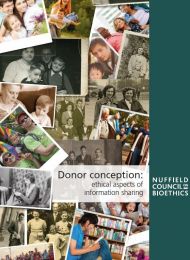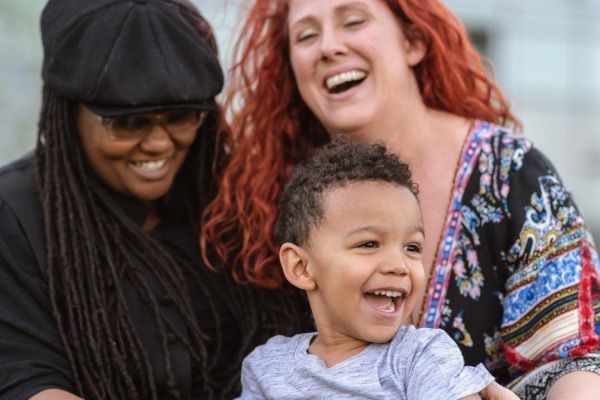Donor conception: ethical aspects of information sharing
Report
Published 17/04/2013

The parents of a child born as a result of donated gametes or a donated embryo are the child’s legal parents from birth, as long as they had treatment in a UK licensed clinic.
Information about donors
Donors who donate through a licensed clinic are not legally considered to be a parent and have no parental rights or responsibilities in respect of any children born as a result of their donation.
However, information about donors is collected by a regulatory body, the Human Fertilisation and Embryology Authority (HFEA), so that this can be provided later to donor-conceived people on request. Brief descriptive information such as the donor’s eye and hair colour is always collected, and donors are also encouraged, although not required, to provide biographical information about themselves, for example in the form of a ‘pen portrait’. They are also encouraged to write a message for the future donor-conceived person or persons. This information (in an anonymised form) is also available to parents so that they can share it with their children during childhood, if they wish.
Unless a ‘known donor’ is used, parents and their donor-conceived children will not know the identity of the donor during the donor-conceived person’s childhood. However, as a result of a change in the law in 2005, in the future donor-conceived adults will be able to find out the identity of their donor if they wish. The amount of information available will depend on when they were born because the change in the law does not apply to past donations.
People conceived with gametes donated after April 2005
At age 18 can obtain identifying information about the donor.
People conceived with gametes donated between August 1991 and April 2005
No identifying information available unless the donor chooses to become identifiable, although the HFEA can supply non-identifying information.
People conceived before regulation began in 1991
No access to any information via the HFEA, although limited information may be available from clinics.
The voluntary Donor Conceived Register offers the possibility of being ‘matched’ through DNA testing if donor and donor-conceived person both choose to join. Matches between donor-conceived siblings are also possible.
Telling people they are donor-conceived
In the past, most clinics encouraged prospective parents to forget about their treatment as soon as it was over. It was thought to be unnecessary, and potentially harmful, to tell children about how they were conceived. However, social and professional attitudes have changed, and now parents are strongly encouraged to tell.
Some people feel that the state should do more to make sure that donor-conceived people know of the circumstances of their birth, so that they are in a position to ask for the information held on their behalf by the HFEA. For example, birth certificates could include a note that the person is donor-conceived. It has also been suggested that the law should change retrospectively so that all donor-conceived people, not just those born after 2005, can find out the identity of their donor.
The UK Government has not accepted the need for any further change in the law. There are significant differences in approach to these issues across Europe and around the world. Many countries, for example, think it is important for donors to remain completely anonymous.
Support
Under UK law, potential donors and prospective parents must be given a “suitable opportunity” to receive counselling about the implications of donation or treatment before they decide to go ahead. Clinics vary in how much they encourage people to take part in counselling sessions.
Donor-conceived adults applying to the HFEA’s Register for information about their donor should also be given a “suitable opportunity” to receive counselling about the implications of this, before the HFEA provides the information. However, at present there are no dedicated specialist services for those in this position.
Apart from the support provided by clinics at the time of donation and treatment, the main sources of support for people affected by donor conception, particularly for families, are voluntary sector organisations such as the Donor Conception Network and the National Gamete Donation Trust.

Share